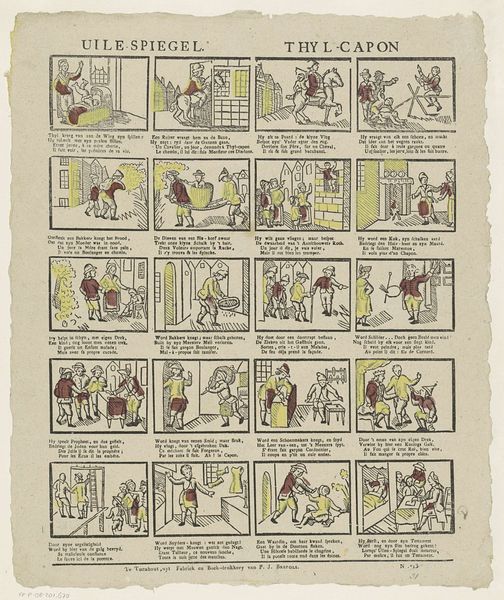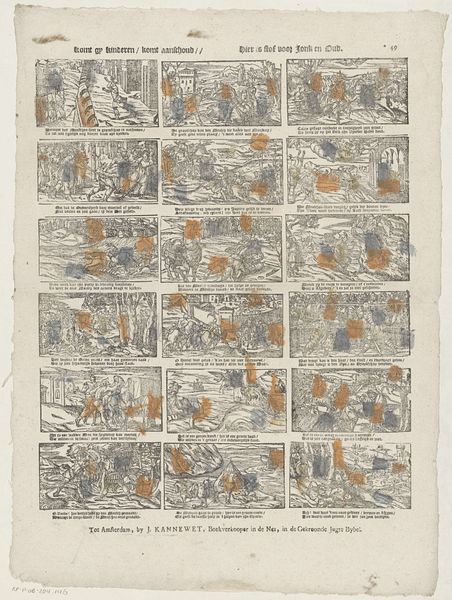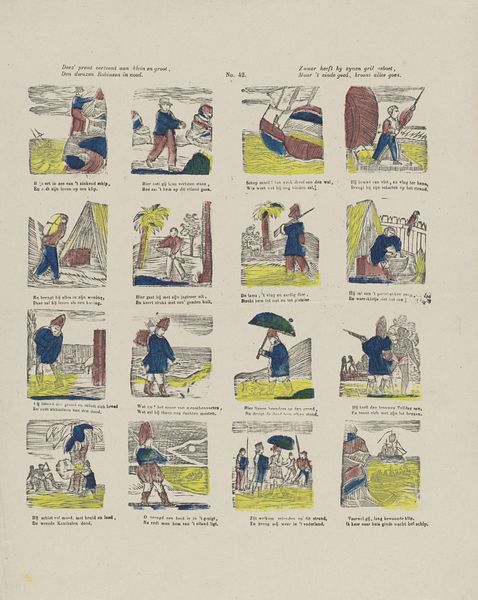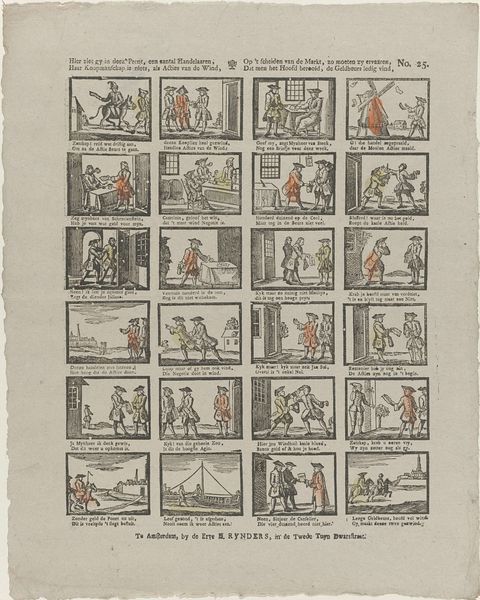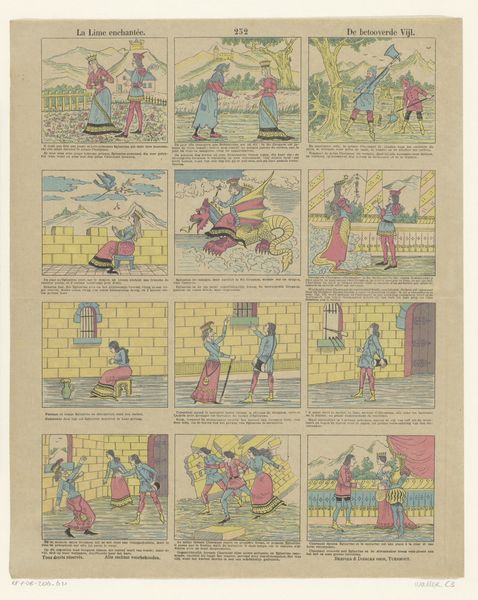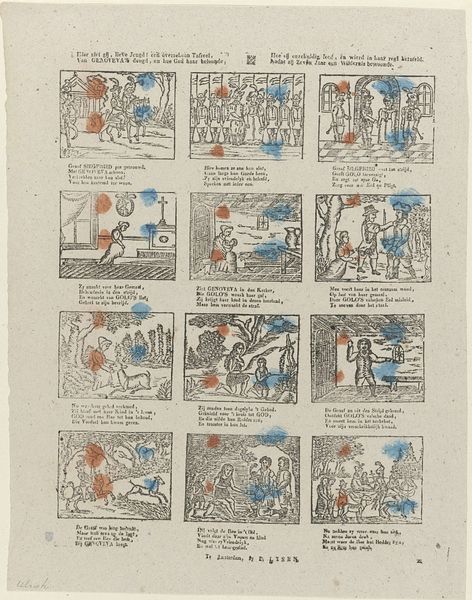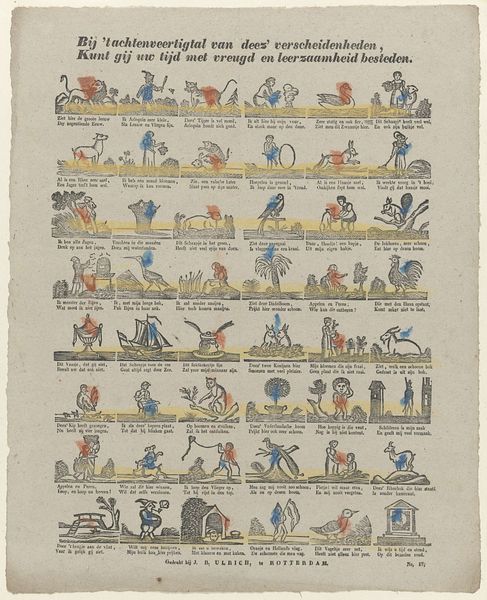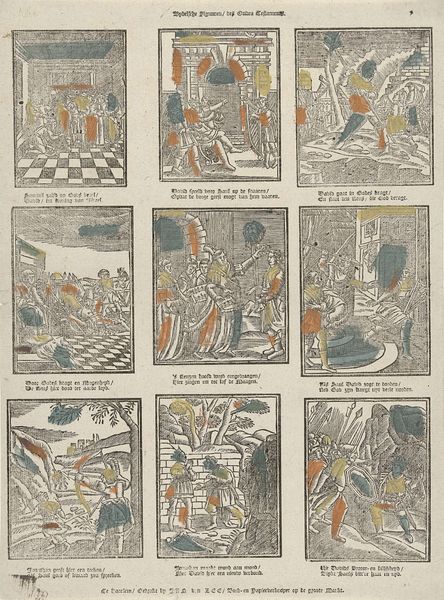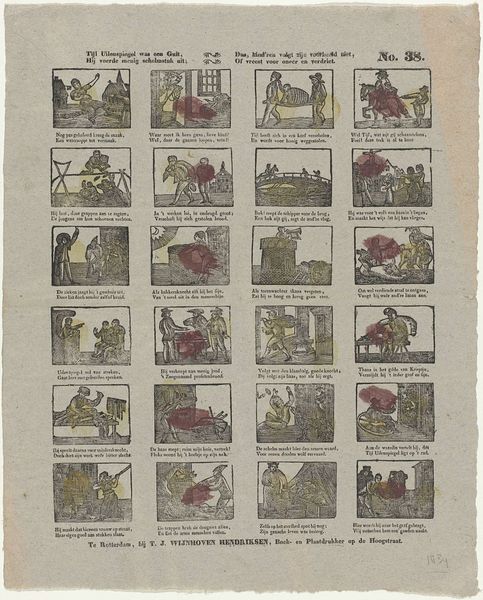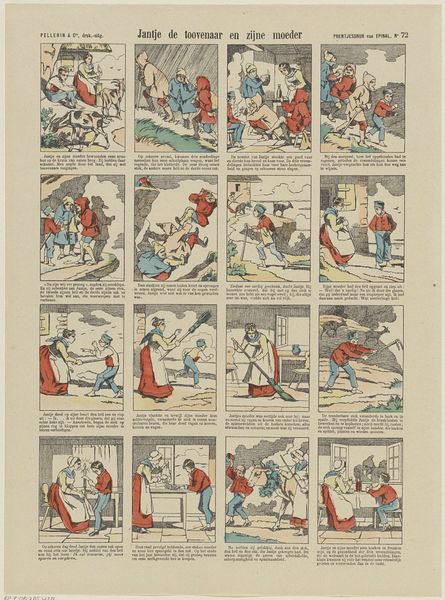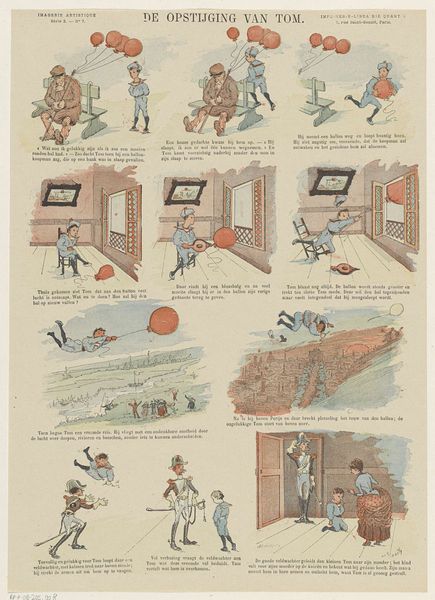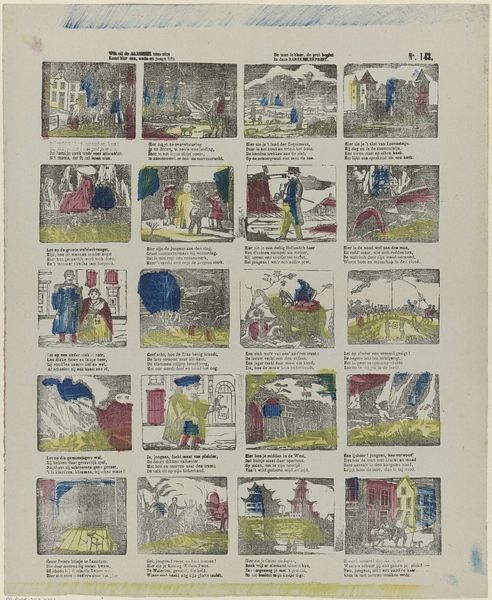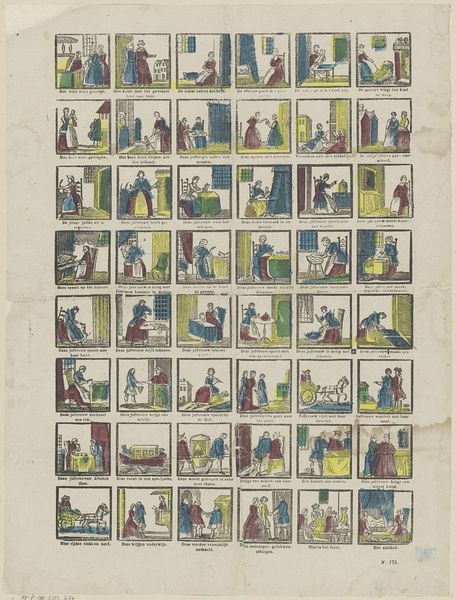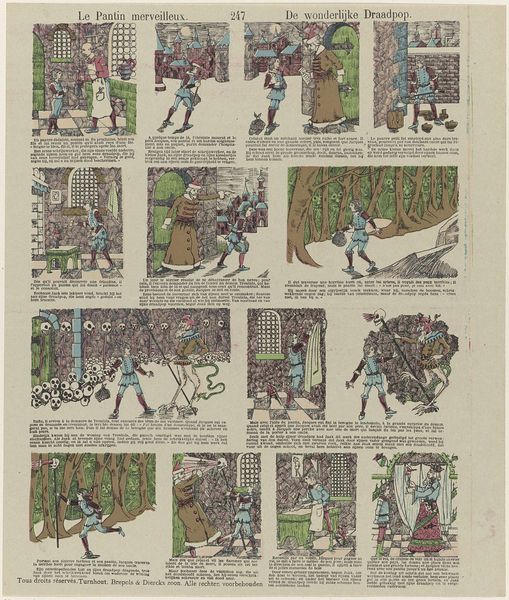
Dimensions: height 399 mm, width 293 mm
Copyright: Rijks Museum: Open Domain
Editor: This print, "De geschiedenis van ridder Paul," made sometime between 1869 and 1888 by J.H. van Wees, depicts a sequence of events in watercolor, pen, and ink, almost like a comic strip. I’m immediately drawn to the composition—the circular vignettes set against the neutral background. How would you interpret this work from a formalist point of view? Curator: Intriguing, isn't it? If we strip away the narrative, which seems dominant at first glance, what remains? Look closely at the geometry at play. The artist employed circular frames to contain each scene and create a repetitive visual rhythm. Note how that shape is echoed in the helmets of the figures, softening the implied militarism of the garb. What effect does the circular motif create here? Editor: I suppose it creates a sense of unity across the scenes, and also confines each event, separating it from the rest of the "story" perhaps? But what about the choice of watercolor? Curator: Precisely. Watercolors lend themselves to the depiction of atmosphere and texture. Notice how van Wees used it in concert with pen to achieve clarity but also allow for subtleties of light and shadow within each frame. Moreover, consider the use of printmaking here: what significance might you ascribe to the distribution of such images among the Dutch populace? Editor: Well, printing allowed art to reach a much wider audience than painting would. So by choosing print, the artist's was emphasizing popular distribution, reaching lots of households with children. It is fascinating to consider those implications in relation to semiotics! Curator: Indeed! By reducing these pictorial elements to their component structure, while being alert to popular sentiment, we start to uncover underlying structures of meaning within this ostensibly simple narrative. Editor: This reframing has given me a new lens through which to look at sequential art forms. Thanks!
Comments
No comments
Be the first to comment and join the conversation on the ultimate creative platform.
